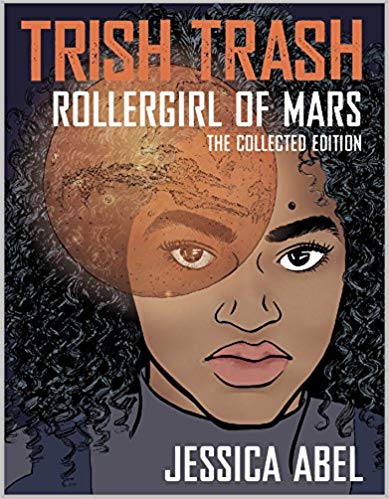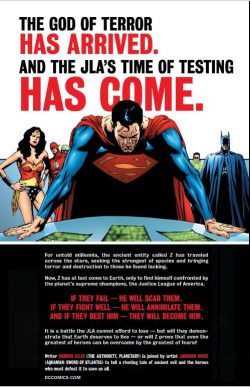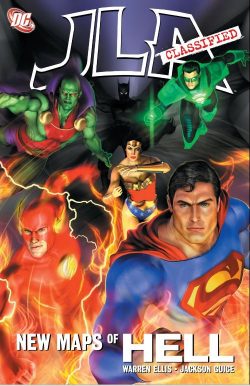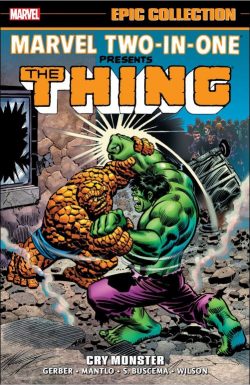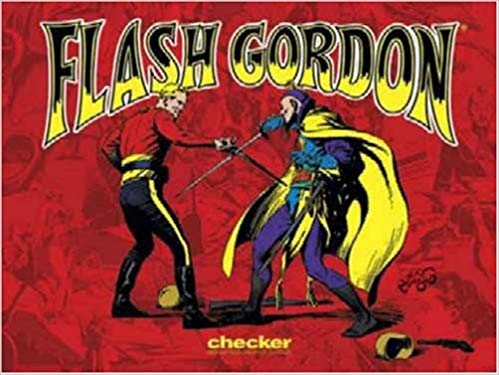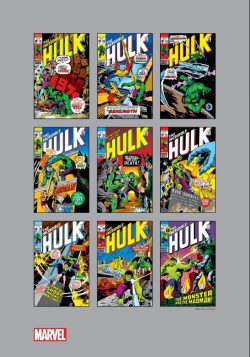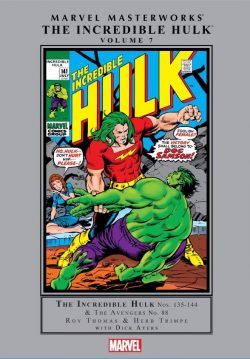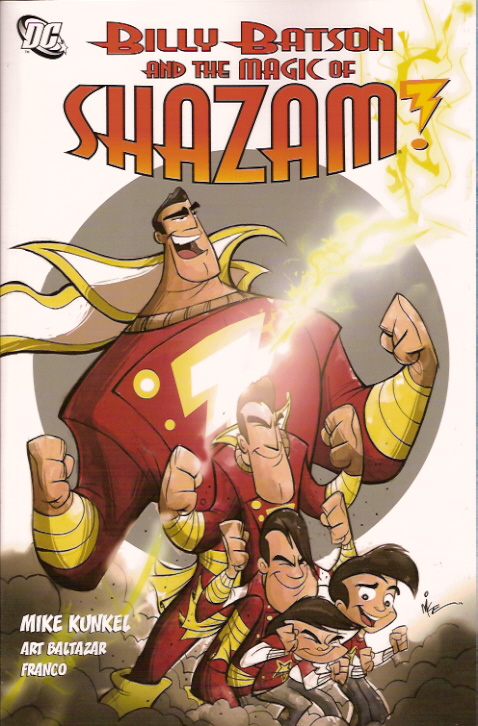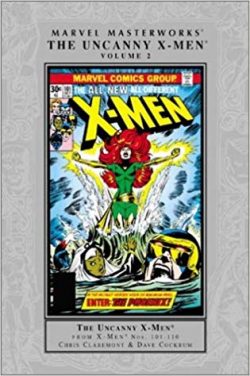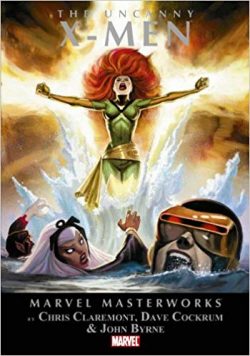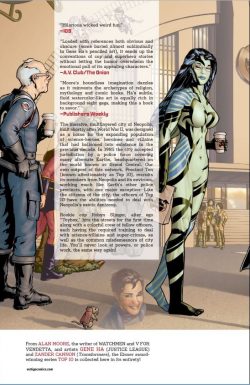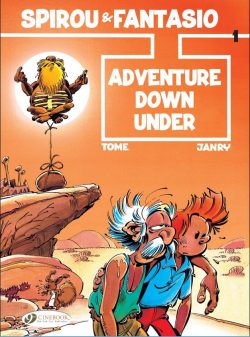
By Tome & Janry, translated by Jerome Saincantin (Cinebook)
ISBN: 978-1-84918-011-5
For most English-speaking comic fans and collectors Le Journal de Spirou is probably Europe’s biggest secret. The character is a rough contemporary – and bald commercial response – to Hergé’s iconic superstar Tintin, whilst the comic he has headlined for decades is only beaten in sheer longevity and creativity by our own Beano and Dandy.
First conceived at Belgian Printing House by Jean Dupuis in 1936, a magazine targeting a juvenile audience debuted on April 21st 1938 (three and a bit months before DC Thomson’s Beano, but still beaten by The Dandy which launched on December 4th 1937). It was edited by Charles Dupuis (a mere tadpole, only 19 years old himself) and took its name from the lead feature, which recounted the improbable adventures of a plucky bellboy/lift operator employed by the Moustique Hotel: a reference to the publisher’s leading magazine, Le Moustique.
With his pet squirrel, Spip (who joined the cast on June 8th 1939; he’s the longest running character in the strip after Spirou himself, so happy 80th anniversary, little dude!) the plucky kid was the idea of French artist Robert Velter, who signed himself Rob-Vel.
A Dutch language edition – Robbedoes – debuted a few weeks later and ran more-or-less in tandem with the French parent comic until it’s cancellation in 2005.
Although some home-grown product crept in, the bulk of the comic was taken up with cheap American reprint imports: Red Ryder by Fred Harman, William Ritt & Clarence Gray’s Brick Bradford and Siegel & Shuster’s landmark creation Superman. Most prominent were ‘Tif et Tondu’ by Fernand Dineur (which ran until the1990s) and ‘L’Epervier Blue’ by Sirius (Max Mayeu), and they were soon supplemented by comic-strip wunderkind Joseph Gillain – “Jijeâ€. During World War II Jije legendarily drew the entire comic by himself, continuations of the banned US imports included, as well as assuming production of the Spirou strip where he created the current co-star Fantasio.
Except for a brief period when the Nazis closed the comic down (September 1943 to October 1944 when the Allies liberated Belgium) Spirou and its boyish star – now a globe-trotting reporter – have continued their weekly exploits in unbroken four-colour glory.
Among the other myriad major features that began within those pages are ‘Jean Valhardi’ (Jean Doisy & Jije), ‘Blondin et Cirage’ (Victor Hubinon), Buck Danny, ‘Jerry Spring’, ‘Les Schtroumpfs’ (AKA the Smurfs), Gaston Lagaffe (here seen as Gomer Goof) and a certain laconic cowboy named Lucky Luke.
Spirou the character (the name translates as both “squirrel†and “mischievousâ€) has starred in the magazine for most of its life, evolving – under a succession of creators – into a simultaneously urbane yet raucous fantasy/adventure hero with the accent heavily on light humour.
With comrade and rival Fantasio and crackpot inventor the Count of Champignac, Spirou travels to exotic places, uncovering crimes, revealing the fantastic and garnering a coterie of exotic arch-enemies.
During the War, when Velter went off to fight, his wife Blanche Dumoulin took over the strip using the name Davine, assisted by Luc Lafnet. Dupuis assumed control of and rights to the strip in 1943, assigning it to Jije who handed it to his assistant André Franquin in 1946. It was the start of a golden age.
Among Franquin’s innovations were villains Zorglub and Zantafio, Champignac and one of the first strong female characters in European comics, rival journalist Seccotine (renamed Cellophine in this current English translation), but his greatest creation – one he retained on his departure in 1969 – was the incredible magic animal Marsupilami (first seen in Spirou et les héritiers in 1952). The little perisher is now a star of screen, plush toy store, console and albums all his own.
From 1959 writer Greg and background artist Jidéhem assisted Franquin, but by 1969 the artist had reached his Spirou limit and resigned, taking his mystic yellow monkey with him. He was succeeded by Jean-Claude Fournier who updated the feature over the course of nine stirring adventures that tapped into the rebellious, relevant zeitgeist of the times with tales of environmental concern, nuclear energy, drug cartels and repressive regimes.
As the series entered the 1980s Spirou seemed to stall: three discrete creative teams alternated on the serial: Raoul Cauvin & Nic Broca, Yves Chaland and the creators of the graphic novel under review here: Philippe Vandevelde writing as Tome and artist Jean-Richard Geurts AKA Janry.
These last adapted and referenced the beloved Franquin era and revived the feature’s fortunes, producing 14 wonderful albums between 1984 and 1998. This one, Spirou et Fantasio 34 – Aventure en Australie from 1985, was their second.
Since their departure Lewis Trondheim, and the teams of Jean-Davide Morvan & Jose-Luis Munuera and Yoann & Vehlmann, have brought the official album count to 55 (there also are a bunch of specials, spin-offs and one-shots, official and otherwise)…
Without further ado we plunge straight into the bizarre, treasure-hunting drama as dire doings Down Under segue into Spirou and Fantasio arriving home exhausted from their latest assignment. They are intercepted by Cellophine at the airport: odd things are occurring in the depths of the Outback and the always-newsworthy Count of Champignac is right at the heart of it. Instantly awake again, all three jet out to Australia where nefarious deeds are occurring at the desolate Albuh Opal Mine.
The crazy inventor is there on the verge of a fabulous and incredible discovery far more precious than jewels, but the ruthless miners don’t seem that impressed, although they are worried by disappearing diggers, inexplicable accidents, men driven crazy and, if some observers are to be believed, levitating aborigines…
This classy blend of thrilling mystery, weird science, light adventure and broad slapstick remains a pure refreshing joy in a market far too full of adults-only carnage and testosterone-fuelled breast-beating. Easily accessible to readers of all ages drawn with all the welcoming style and panache that makes Asterix, Lucky Luke and Iznogoud so compelling and readily available in both paperback album and eBook formats, this is a cracking read and the start of a long line of translated epics that should be as much a household name as those series – and even Tintin himself…
Original edition © Dupuis, 1985 by Tome & Janry. All rights reserved. English translation 2009 © Cinebook Ltd.

